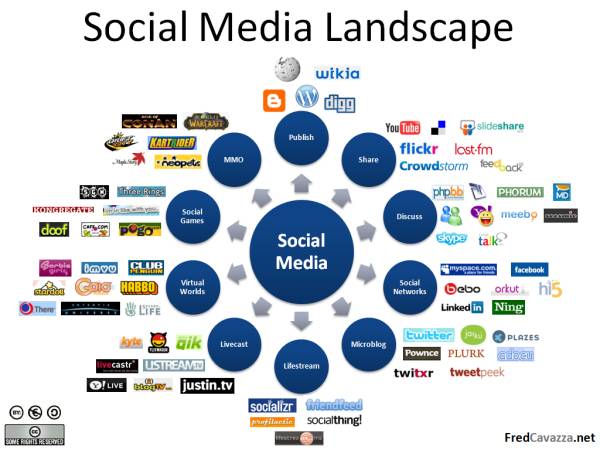21 May TIVA Talk: Monetizing Online Video And Creating a Video Network
We here at Word Wizards, Inc. love social media because it provides us with a great way to reach out to our customers besides the traditional e-mails and phone—which is so 20th century. One of its strengths is the ability to reach out to so many by giving professionals of all types, and especially video professionals, multiple outlets to show their work and even make some money. The question then becomes, how do we effectively monetize our work and videos and build a successful video network? These exact questions were the focus of a recent TIVA meeting, where Richard Harrington guided us through the many layers of the web, and laid out the best steps to follow when building a prominent presence in the world of Facebook, Youtube and Twitter (among others).
Hypersyndication
Richard calls his method “hypersyndication.” It is his way of getting videos to the most people on the web, using a varied number of social media outlets to reach different audiences. The main steps he follows to hypersyndicate his work are listen, follow, curate, become known, and create original content. You start by listening and seeing what’s out there and seeing what kind of programming or content is being offered on the web. The next step is to follow other people who are doing the type of videos or programming that you’re doing, so you can see what he or she is contributing. As Richard pointed out, don’t necessarily think of these people as competition, since you may end up actually working with them in some way in the future. The next step is to curate where one goes through his or her range of work and really narrows down what he or she would like to share. For example, Richard collected several stories that he wanted to share on his blog. An important step is to become known and gain a reputation as an expert on a subject because if no one knows you, why would they care if you put out a bunch of videos? You then create the original content and start to put it out on the web.
Getting You Work Out There
So now you may be thinking, great so I just have to put it out on a bunch of channels like Youtube, Facebook and Twitter at once and I’m set. Not so fast, there’s a very important strategy that you’ll want to follow when getting your work out there. Its important not to oversaturate or send your work out to all the same places at the same time. If you do this, you really are limiting the amount of people you’ll hit since people are on social media at different times. The best way to reach these different audiences is to send out messages or posts about your work at different times. This is where Hootsuite, a fantastic social media manager, comes into play. Not only does it help you manage all your social media feeds in one place, it also allows you to schedule when your posts go out.
Metrics, Analytics and RSS Feeds
Twitterfeed is another useful site that lets you send posts and your work to a variety of different channels like hootsuite. Another incredibly useful feature that both of these sites share, is the ability to use metrics and actually track how many people are seeing your feeds. Using analytics and a variety of graphs you can see such things such as what devices people are using to view your content, where they are viewing from, how many times he is clicking on your work and what key word she is typing that lead them to your work. Another important thing most people should know about is RSS Feeds which are a type of web syndication used to publish frequently updated works such as blogs and websites. Readers can subscribe to these feeds and keep getting updated on new stories and content through software known as an RSS reader which is usually offered on most rss pages. Some well know web sites that use RSS include Apple and The New York Times.
Power of Mobile and Good Places For Your Work
As Richard pointed out the majority of online video content is now viewed on smart phones, tablets or e-readers so its good to make sure your work can be viewed on all platforms especially mobile ones. Richard’s follows these simple steps to delivering mobile video: plan, produce, distribute, promote and then try to monetize which is an optional step. As far as producing original content and getting it out there, you don’t need high production values but you do need good, engaging content that people will want to keep coming back to. The optimal schedule to follow is to get a video out at least once a week. Some people put videos out as much as three times a week, which can be a lot for a viewers to keep up with. Two sites that are particularly good for video include Blip.tv and Vimeo Pro. Blip.tv is an especially great site for web series as it really makes an effort to work with you and push your series to help it get attention. Vimeo Pro is also very good because they make sure your videos can be viewed in a variety of formats and devices, especially mobile ones that so many people use today.
Podcasting and More Info.
Podcasting, where you create digital media than you can then send out to be viewed on mobile video players, is another useful way to get yourself out there. Listeners and viewers can subscribe to your podcasts via an RSS feed and watch them whenever and where they’d like. Two sites that are great for launching podcasts are Podhoster and Libsyn. Podcasting is great way to easily get your content out to an audience that probably wouldn’t see it and is very much on the cutting edge. I’ve only scratched about half of all the great advice from Richard, so please to feel free to check out his blog at richardharringtonblog.com and his hypersyndication video, which goes into even greater detail about the topics that are covered here.







